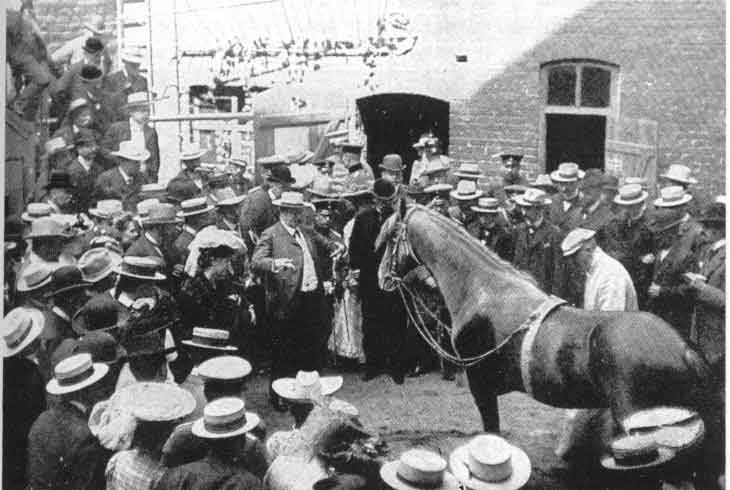Observer bias occurs in research when the beliefs or expectations of an observer (or investigator) can influence the data that’s collected in a study.
This causes the results of a study to be unreliable and hard to reproduce in other research settings.
In this article we share two famous examples of observer bias along with a strategy that can be used to minimize this type of bias in practice.
Example 1: Clever Hans
In the early 1900’s there was a horse named Clever Hans that was claimed to have the ability to do arithmetic extremely well.
The owner, Wilhelm Von Olson, would ask Clever Hans different questions that involved adding, subtracting, multiplying, and other arithmetic operations and Clever Hans would provide an answer by tapping his hoof a certain number of times.

Amazed by this, psychologist Oskar Pfungst investigated this situation and found that Clever Hans could only provide the correct answer when the owner actually knew the correct answer to the question.
It turns out that when Clever Hans would approach the correct number of taps to make, the owner Wilhelm Von Olson would start to react in a certain way which signaled that Hans should stop tapping.
Without realizing it, the owner was giving subtle cues to Hans about the correct number of taps to make. But when the owner himself didn’t know the answer to the questions he was asking, Hans was unable to produce the correct answer because the owner didn’t make any subtle cues on when to stop tapping.
This is an example of observer bias because the expectations of the owner caused Clever Hans to act in a certain way, which resulted in faulty data.
Example 2: Smart & Dull Rats
In 1963, psychologist Robert Rosenthal had two groups of students test rats. The rats were categorized as being “bright” or “dull” in their ability to complete mazes, even though in reality they were all the same type of standard lab rat.
The results of the study showed that the students who thought they were handling “bright” rats behaved in certain ways to make sure that the rats had a better chance of completing the maze while the students who thought they were handling “dull” rats behaved in ways that reduced the rats chances of completing the mazes.
This is an example of observer bias because it turns out that the expectations of the students influenced how well the different groups of rats performed.
How to Minimize Observer Bias
The easiest way to minimize observer bias is to ensure that the observer doesn’t have any expectations of the subjects for which they’re gathering data.
In technical terms, we say that the observers should be blinded to the ability of the subjects or the expected outcomes of the subjects.
For example, the person asking arithmetic questions to Clever Hans should not know the answer to the question they’re asking. This will prevent them from giving subtle cues to Hans about what the correct answer should be.
Or, in the example with the rats, the students should not know which “type” of rat they’re handling. Instead, they should simply be told to test the rats in the maze and no distinction should be made on whether or not they’re handling “bright” or “dull” rats.
Additional Resources
The following articles provide explanations of other types of bias that can occur in research:
What is Referral Bias?
What is Self-Selection Bias?
What is Omitted Variable Bias?
What is Aggregation Bias?